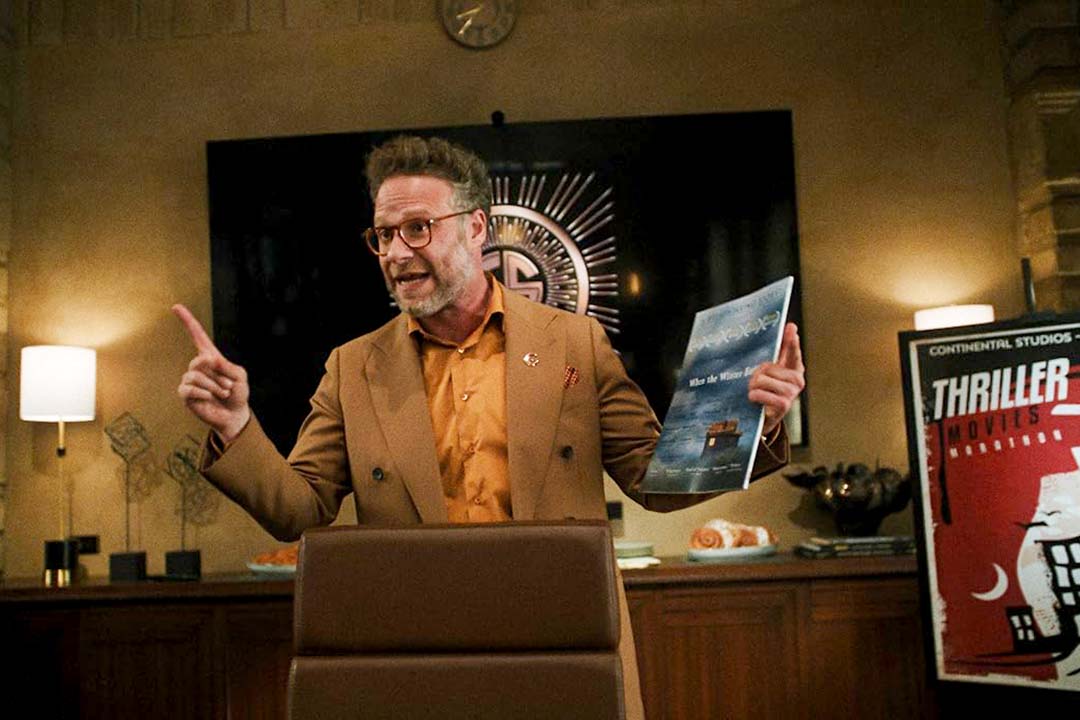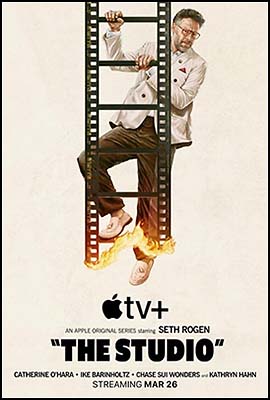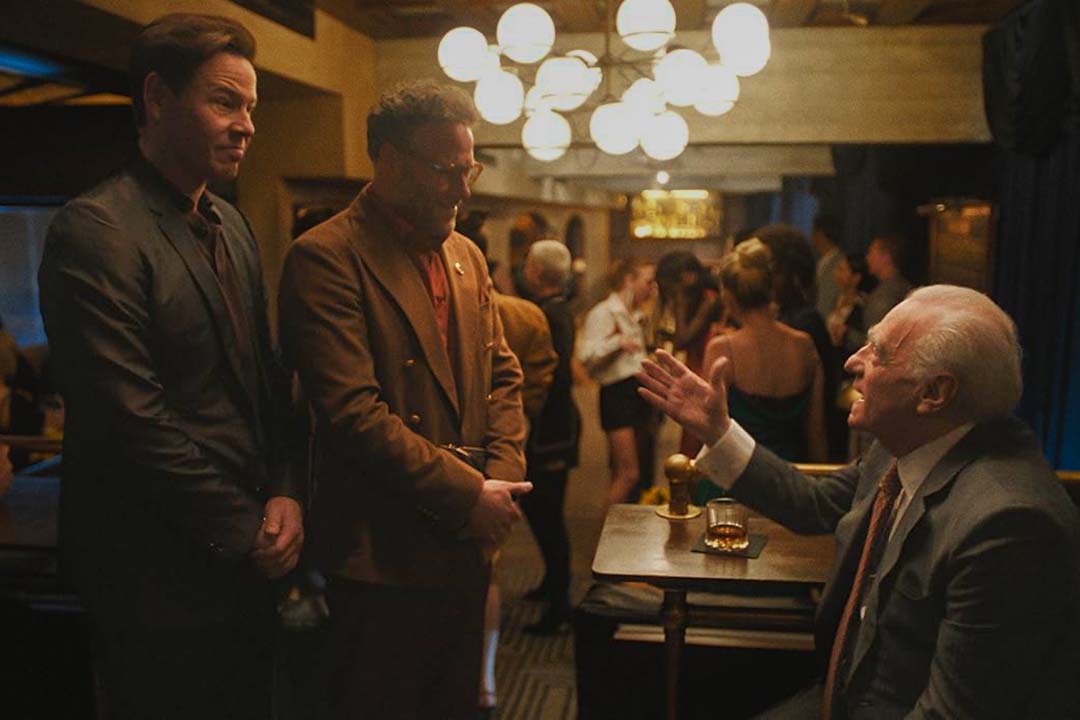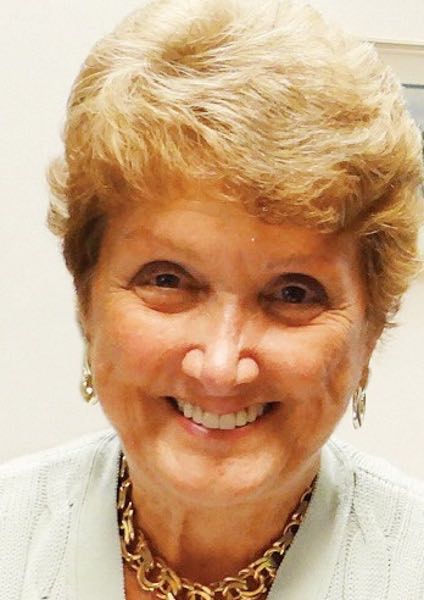On Screen: “The Studio”

The Studio
 Ever wanted to sneak behind closed doors and see what propels the Hollywood Dream Machine? That’s what happens in the cameo-cluttered, 10-episode satire “The Studio,” skewering the perennial Art-vs-Commerce dilemma.
Ever wanted to sneak behind closed doors and see what propels the Hollywood Dream Machine? That’s what happens in the cameo-cluttered, 10-episode satire “The Studio,” skewering the perennial Art-vs-Commerce dilemma.
When delusional dreamer Matt Remick (co-creator Seth Rogen) becomes the head of Continental Studios, he’s told by CEO Griffin Mill (Bryan Cranston) that his job is to make IP-driven movies that will succeed at the box-office, not “artsy-fartsy films.”
Problem is: pretentious cinephile Matt thinks he can do both — only to encounter obstacles from his resentful, ousted predecessor-mentor Patty Leigh (Catherine O’Hara), money-hungry marketing guru Maya Mason (Kathryn Hahn), coke-sniffing best friend-VP of Production Sal Saperstein (Ike Barinholtz), and assistant-turned-creative exec Quinn Hackett (Chase Sui Wonders).
“I got into this business because I love movies,” Matt tells Patty, “but now I have this fear that my job is to ruin them.”
Spurred by the “Barbie” box-office bonanza, one of Matt’s first projects involves creating an origin story for the Kool-Aid Man. (Apparently, that was loosely inspired by Rogen and his partner Evan Goldberg’s eviscerating experiences with Sony, creating the political parody “The Interview” which eventually imploded.)

What distinguishes this screwball show are the guests — Martin Scorsese, Ron Howard, Zoe Kravitz, Steve Buscemi, Charlize Theron, Zac Efron, Ice Cube, Sarah Polley, Anthony Mackie, Greta Lee and Olivia Wilde, among others — playing exaggerated versions of themselves.
Martin Scorsese’s segment finds the Oscar-winning director pitching a story about Jonestown: “Isn’t that the massacre where everyone commits suicide by drinking Kool-Aid?” Eventually, Scorsese dismisses Matt as a “talentless, spineless suit.”
Obviously, the more you know about the treacherous machinations and maneuvering in contemporary Hollywood, the easier the caricatures are to identify — like Patty, who probably traces her real-life lineage to former Sony chief Amy Pascal, the exec who green-lit Rogen’s “Superbad,” “Pineapple Express” and “This Is the End.”
Bran Cranston’s character Griffin Mill is named after Tim Robbins’s ambitious studio head in Robert Altman’s Hollywood send-up “The Player” (1992) — and in tribute to that film, almost every scene is done in a single long take.
There’s a humiliating night at the Golden Globes and the two-part conclusion is aptly set at CinemaCon in Las Vegas.
On the Granger Gauge of 1 to 10, “The Studio” is a farcical, cynical, perceptive 8 — streaming on Apple TV+ and renewed for a second season.
 Susan Granger is a product of Hollywood. Her natural father, S. Sylvan Simon, was a director and producer at M.G.M. and Columbia Pictures. Her adoptive father, Armand Deutsch, produced movies at M.G.M.
Susan Granger is a product of Hollywood. Her natural father, S. Sylvan Simon, was a director and producer at M.G.M. and Columbia Pictures. Her adoptive father, Armand Deutsch, produced movies at M.G.M.
As a child, Susan appeared in movies with Abbott & Costello, Red Skelton, Lucille Ball, Margaret O’Brien, and Lassie. She attended Mills College in California, studying journalism with Pierre Salinger, and graduated from the University of Pennsylvania with highest honors in journalism.
